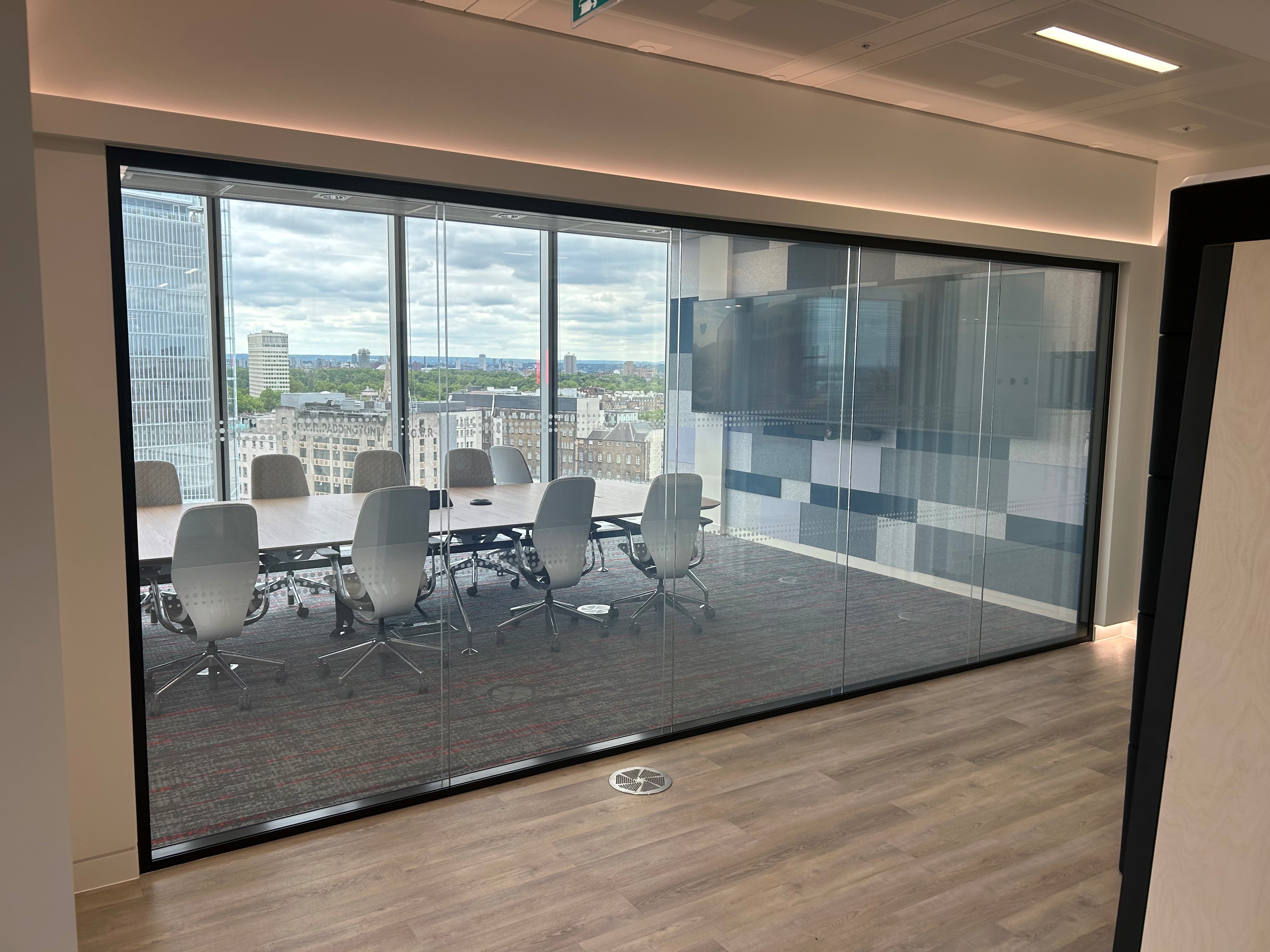
When it comes to specifying acoustic glazed partitions on large commercial projects, one area that can often be overlooked is how these systems are impacted by deflection.
In our latest blog, we sit down with our Design Manager, Felipe Sanches, to briefly explain what deflection is, the importance of allowing for deflection in glazed partition systems and the specification considerations.
So, what is deflection?
In the context of construction, deflection refers to the bending or flexing of a structural element, such as a beam or column, from it’s original position due to the various loads it experiences during its service life.
In the case of glazed partition systems, deflection refers to the amount of movement or bending that occurs within the glass panels or the supporting framework when subjected to external forces, such as wind, seismic activity, or even just the everyday activities of occupants in a building.

The importance of deflection in glazed partition systems
1. Safety.
Of course, safety is a top priority in construction, and deflection plays a significant role in ensuring it. Excessive deflection in a glazed partition system can pose a risk to occupants. It can lead to glass breakage, potential injuries, and property damage. Understanding and managing deflection is crucial to prevent such accidents.
2. Functionality.
A glazed partition system should not only look great but also serve its intended purpose effectively. Too much deflection can affect the functionality of the system. For instance, if a glazed partition wall bends too much, it might not align properly, impacting the ease of operation and aesthetics.
3. Longevity.
Managing deflection is essential for the long-term durability of glazed partition systems. Over time, excessive deflection can lead to structural fatigue, affecting the lifespan of the materials and increasing maintenance costs.
4. Aesthetics.
Glazed partition systems are often chosen for their elegant and modern appearance. Excessive deflection can distort the glass and framing, compromising the intended design aesthetics.

Specification considerations
Several factors can influence deflection in glazed partition systems.
Firstly, consider the load magnitude. This is the amount of external loads acting on the system, such as wind pressure or seismic activity, as these are primary factors.
The second consideration is the properties of materials used, as the type of glass and framing used in the system will impact its deflection characteristics. For example, thicker or laminated glass can withstand more significant deflection.
Next, think about the system design. The overall design, including the size, shape and support structure, plays a crucial role in managing deflection.
Finally, the quality of the installation is of paramount importance. Proper installation is critical to ensure the system functions as intended, as improperly installed glazed partitions can be more susceptible to deflection issues.
Mitigating deflection
To ensure glazed partition systems perform as expected and meet safety and aesthetic standards, it's vital to work with experienced structural engineers who understand the principles of deflection.
They can help to design and install the system with measures to mitigate excessive deflection, such as using appropriate materials, support structures, and anchoring methods.
Our team use their knowledge to work closely alongside structural engineers and specifiers to ensure deflection is properly understood and accounted for.
For more information about deflection or specifying acoustic glazed partitions for your projects, contact us here and our expert team would be delighted to assist.
Related articles

Embodied Carbon in Glazed Partitions



